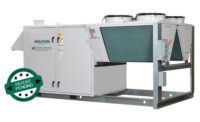SCHOFIELD, Wis. — Greenheck has introduced a line of modular air distribution systems that the company says are designed to accommodate the specialized medical, mechanical, and electrical considerations of operating and imaging rooms.
Incorporating laminar diffuser arrays that simplify coordination during design and installation, these modular systems maximize diffuser coverage over the patient ensuring optimal conditions for medical procedures, a press release from Greenheck said.
The Model HLC-MPA modular plenum array utilizes configurable diffuser segments assembled on site to create a single low-profile diffuser array. This allows engineers to make the most of available ceiling space by eliminating the need to individually duct each diffuser, the company said. Available in an assortment of sizes, the diffuser segments can be linked together in virtually any combination to cover the surgical site. Optional integrated lighting solutions are available to optimize illumination over the patient.
The Model HLC-SPA structural modular plenum array is designed to be a turnkey laminar diffuser array that maximizes air cleanliness while reducing design, coordination, and installation time, the press release said. High-grade structural steel tubing creates a frame that attaches to the building structure and supports all the diffuser modules and includes mounts for both static and movable medical equipment. Structural engineering calculations, on-site installation supervision, and trade coordination are included.
The Model HLC-HCG heavy-duty ceiling grids seamlessly integrate laminar flow diffusers, equipment booms, and surgical luminaires to create the central diffuser array. Available in customizable configurations to fit any room, HLC-HCG ceiling grid systems allow for diffusers to be placed closer together than surface mounting, maximizing patient coverage and improving air cleanliness within the sterile field.
Greenheck operating and imaging room modular air distribution systems are designed to meet FGI, ANSI/ASHRAE Standard 170, and ANSI/IES RP-29-16 requirements.








